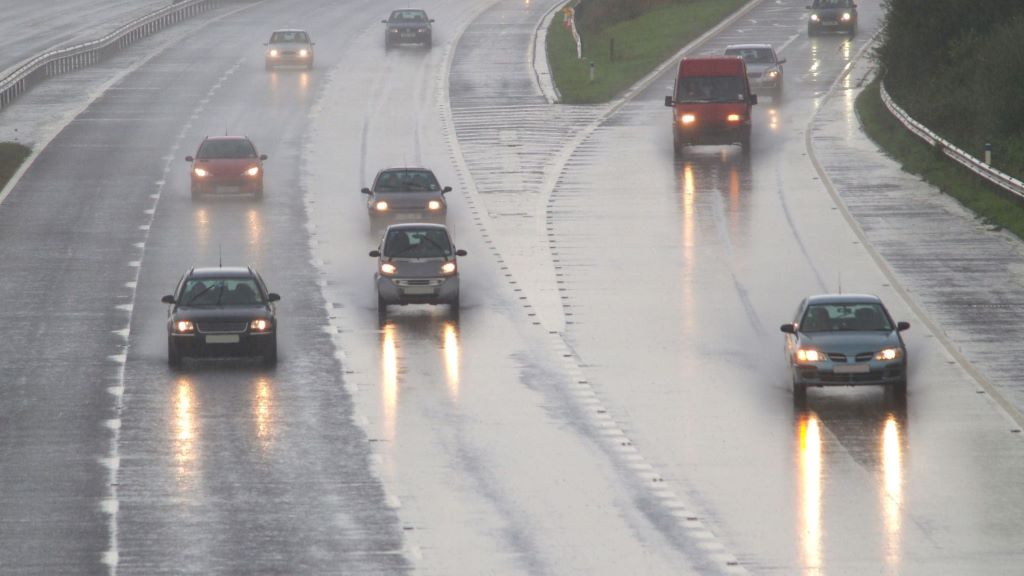Modern vehicles come equipped with advanced driver assistance systems designed to enhance road safety. Lane keep assist technology represents one of the most valuable innovations in automotive safety. However, adverse weather conditions present significant challenges for these sophisticated systems. According to automotive experts at Our Auto City, understanding how weather affects vehicle safety technology helps drivers make informed decisions about when to rely on automated systems.
Foggy conditions create particularly challenging scenarios for lane keep assist systems. These weather events reduce visibility dramatically and interfere with the sensors that modern vehicles depend on. When fog rolls in, drivers often discover that their trusted safety features may not perform as expected. Therefore, understanding the limitations of lane keep assist technology becomes crucial for maintaining road safety.
Understanding Lane Keep Assist Technology
Lane keep assist systems use cameras and sensors to monitor road markings and vehicle position. The technology works by continuously scanning the roadway ahead and identifying lane boundaries. When the system detects unintentional lane departure, it provides steering corrections or warnings to help drivers maintain proper lane position.
Most modern systems rely heavily on optical sensors and cameras mounted near the rearview mirror. These components analyze visual data from the road surface to identify painted lane markers. Additionally, some advanced systems incorporate radar sensors and other detection methods. However, the lane keep assist system failure becomes more likely when environmental conditions interfere with sensor performance.
The effectiveness of lane keep assist depends entirely on clear sensor readings and visible lane markings. Furthermore, the system requires consistent lighting conditions and unobstructed views of road surfaces. When these conditions change, the reliability of lane keep assist technology decreases significantly.
How Fog Affects Lane Keep Assist Systems
Fog creates multiple challenges for lane keep assist technology simultaneously. The water droplets suspended in fog scatter light and reduce visibility for both human drivers and vehicle sensors. Consequently, cameras struggle to identify lane markings clearly when fog density increases.
Optical sensors experience particular difficulty during foggy conditions because they depend on reflected light to function properly. The microscopic water particles in fog absorb and scatter light waves, creating interference patterns that confuse sensor readings. Therefore, even light fog can cause intermittent system failures or reduced accuracy.
Temperature variations associated with fog formation also affect sensor performance. Many lane keep assist systems experience calibration issues when rapid temperature changes occur. Additionally, condensation may form on sensor lenses, further reducing system effectiveness. These combined factors explain why lane keep assist reliability decreases substantially during foggy weather conditions.
Common Failure Modes in Foggy Weather
Lane keep assist systems exhibit several predictable failure patterns during foggy conditions. The most common issue involves complete system shutdown when sensors cannot detect lane markings reliably. Many vehicles display warning messages indicating that lane keep assist has become temporarily unavailable.
Intermittent operation represents another frequent problem during fog events. The system may work sporadically, engaging and disengaging as fog density changes. This inconsistent behavior can create confusion for drivers who expect reliable system performance. Moreover, partial system functionality may provide false confidence in challenging driving conditions.
Some vehicles experience delayed response times when fog interferes with sensor readings. The lane keep assist may still function but respond more slowly to lane departure events. According to a recent study by the National Highway Traffic Safety Administration, delayed response times in automated safety systems can reduce their effectiveness significantly during adverse weather conditions.
Safety Implications and Driver Awareness
Understanding lane keep assist limitations during foggy weather directly impacts driver safety decisions. Drivers who rely heavily on automated systems may experience increased risk when weather conditions reduce system effectiveness. Therefore, maintaining awareness of system limitations becomes essential for safe driving practices.
The false sense of security created by partially functioning systems presents particular dangers. Some drivers may maintain higher speeds or reduce their attention levels when lane keep assist appears to be working. However, reduced system reliability during fog requires increased driver vigilance and manual control.
Professional driving instructors recommend treating lane keep assist as completely unavailable during foggy conditions. This conservative approach ensures that drivers maintain full control and attention throughout their journey. Additionally, reducing driving speeds and increasing following distances becomes even more important when automated safety features may not function properly.
Technological Limitations and Future Developments
Current lane keep assist technology faces fundamental limitations that affect performance during adverse weather. Most systems rely primarily on visual input, which makes them vulnerable to visibility-related challenges. While some manufacturers incorporate multiple sensor types, fog affects nearly all current detection methods.
Research into weather-resistant sensor technology continues advancing rapidly. Some experimental systems use infrared sensors and advanced radar technology that may perform better in foggy conditions. However, these solutions remain expensive and are not yet widely available in consumer vehicles.
Artificial intelligence improvements may also enhance system performance during challenging weather. Machine learning algorithms could potentially recognize lane boundaries using partial visual data when complete visibility is unavailable. Nevertheless, these advances require extensive testing and validation before implementation in production vehicles.
Best Practices for Driving in Fog
When fog reduces visibility, drivers should adopt specific strategies to maintain safety regardless of available technology. First, reduce speed significantly to allow adequate reaction time for unexpected hazards. The general rule suggests traveling at speeds that allow stopping within the visible distance ahead.
Increase following distances substantially when fog affects visibility. Even if lane keep assist continues functioning, reduced visibility requires longer reaction times for all driving decisions. Additionally, use low beam headlights and fog lights when available, as high beams can reflect off fog and reduce visibility further.
Avoid sudden lane changes or aggressive maneuvers when fog is present. Lane keep assist systems may not provide reliable warnings during these conditions, making manual lane changes more dangerous. Furthermore, other drivers may also experience reduced visibility and slower reaction times.
Vehicle Maintenance and System Optimization
Regular maintenance helps ensure optimal lane keep assist performance when conditions allow system operation. Keep camera lenses and sensors clean to maximize effectiveness during clear weather conditions. Additionally, ensure that windshields remain clear and properly maintained to support sensor functionality.
Some vehicles allow drivers to adjust lane keep assist sensitivity settings. Understanding these options helps drivers optimize system performance for their driving preferences and typical road conditions. However, remember that even properly maintained systems may not function reliably during foggy weather.
Professional vehicle inspections can identify sensor alignment issues or other problems that might affect lane keep assist performance. Regular maintenance schedules should include specific attention to advanced driver assistance system components to ensure proper operation when conditions permit.
Conclusion
Lane keep assist technology provides valuable safety benefits under normal driving conditions, but fog presents significant challenges for these systems. The combination of reduced visibility and sensor interference creates conditions where even the most advanced systems may fail to function properly. Understanding these limitations helps drivers make appropriate safety decisions and maintain proper control of their vehicles.
Drivers should treat foggy conditions as situations requiring full manual control and heightened attention. While technology continues advancing, current lane keep assist systems cannot substitute for careful driving practices during adverse weather. Maintaining reduced speeds, increased following distances, and constant vigilance remains the best approach for safe driving when fog affects visibility.
Frequently Asked Questions
- Why does my lane keep assist stop working in fog? Lane keep assist systems rely on cameras and sensors that cannot see lane markings clearly when fog reduces visibility. The system automatically disables itself when it cannot reliably detect lane boundaries to prevent incorrect steering inputs.
- Can I manually override lane keep assist during foggy conditions? Most lane keep assist systems automatically disable themselves in fog, but drivers can typically turn off the system manually if it continues operating inconsistently. Always check your vehicle’s manual for specific override procedures.
- Are some lane keep assist systems better than others in fog? While some systems use multiple sensor types that may perform slightly better in fog, all current lane keep assist technologies struggle significantly when visibility is reduced. No system currently available provides reliable performance in dense fog conditions.
- Should I drive slower when lane keep assist isn’t working? Yes, you should always reduce speed when weather conditions affect visibility or disable safety systems. Slower speeds provide more time to react to hazards and maintain control of your vehicle manually.
- Will future technology solve lane keep assist problems in fog? Researchers are developing advanced sensors and artificial intelligence that may improve performance in adverse weather. However, these technologies are still experimental and not yet available in consumer vehicles.
Read More:







